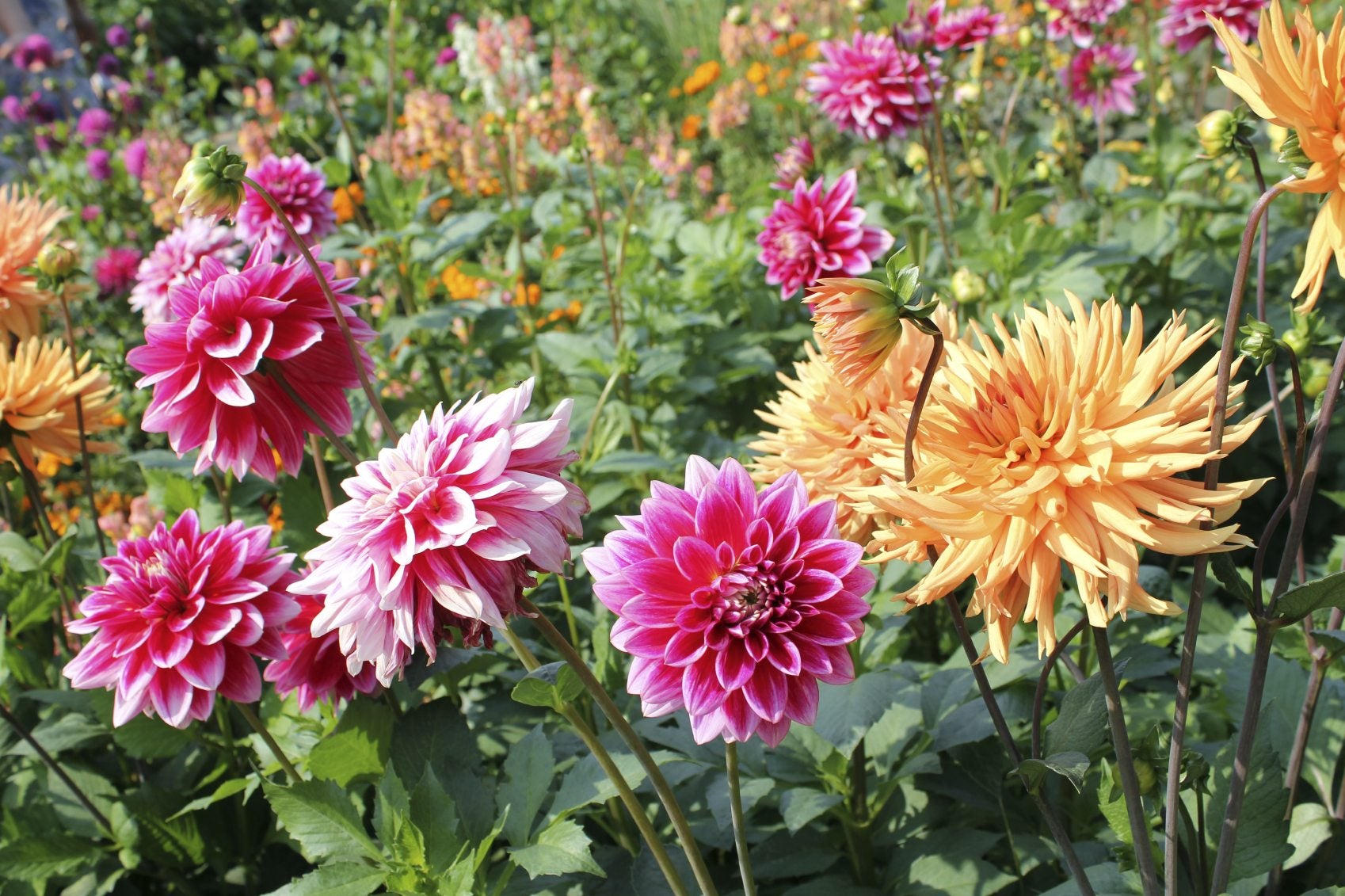Dividing Dahlia Bulbs: How And When To Divide Dahlia Tubers


One of the most diverse and spectacular species of flowers is the dahlia. Whether you want tiny, little, brightly colored poms or dinner-plate-sized behemoths, there is a tuber for you. These amazing plants thrive in hot, sunny locations and can survive in many zones as perennials. Like most tubers, dahlias will produce more tuberous roots. So can you divide dahlias? Definitively. Dividing dahlia bulbs is a simple process that will make more plants and encourage the health of the existing plot.
Can You Divide Dahlias?
I love our state fair where there is an entire pavilion filled with every size, color, shape, and style of dahlia you could imagine. This is a magical place overflowing with promise and unique beauty. Dahlias are easy to grow in well-drained soil, full sun, and deeply tilled earth. Dahlias will die if hit by a long frost, so it is wise to dig them up at the end of the summer and overwinter the tubers indoors. This is an ideal time for splitting dahlia tubers. In spring, plant each healthy one for even more of these lovelies. Dahlias can be propagated through seed, cuttings, and root division. Seeds take a long time to make blooming plants and cuttings are a lot of monkey business. The quickest and most direct way to get more plants that will bloom that year is by dividing dahlia bulbs. Separating healthy tubers from diseased or damaged ones will also ensure vital plants for the next season. The tubers you grew this season will become many more plants the following spring and summer.
When to Divide Dahlia Tubers
Dahlia growers know better than to take a chance and leave the tubers in the ground over winter. Excess moisture may rot the roots and a good hard freeze will simply kill them. If you dig them up in spring, you may find a mass of mushy, rotten tubers which will not produce. During spring, before you plant the overwintered root mass, is when to divide dahlia tubers. If you divide when you pull the roots for overwintering, you may find they are not viable in spring, so wait a bit before splitting dahlia tubers. This is because each tuber must have an eye or growth bud that is viable. You really can’t tell until spring which eyes are growing and which are not healthy. There are a few things to note when learning how to divide dahlia clumps.
How to Divide Dahlia Clumps
Lifting the clump of roots carefully will prevent any mechanical injury which will damage the tubers. This is done in fall, but wait to divide the roots. Find the previous year’s mother tuber and get rid of her. Her energy is mostly spent and she will not be a good plant. Use clean shears to prevent passing disease onto the tubers. Take out any tubers with skinny necks, damage, mold, or broken areas. Look for swollen eyes on the tubers. If you can’t tell where the eyes are, put the tubers in a moist, warm area for a week. The eyes will begin to sprout so you can tell which are healthy. Cut these apart carefully. Some gardeners swear by dusting these with sulfur to protect the cut wound from fungal disease. I never do this and have had no problem, but the dust is available at most nurseries and can’t hurt. Plant the tubers immediately and enjoy another bountiful season of beauty.
Gardening tips, videos, info and more delivered right to your inbox!
Sign up for the Gardening Know How newsletter today and receive a free copy of our e-book "How to Grow Delicious Tomatoes".

Bonnie Grant is a professional landscaper with a Certification in Urban Gardening. She has been gardening and writing for 15 years. A former professional chef, she has a passion for edible landscaping.
-
 ‘Coral Charm’ Peony Care For Sublime Semi-Double Peonies With Lush Salmon Pink Flowers
‘Coral Charm’ Peony Care For Sublime Semi-Double Peonies With Lush Salmon Pink FlowersPeonies are known for their soft baby pink or magenta tones, but if plushy coral blooms are your thing, here’s our guide to the ultimate ‘Coral Charm’ peony care
By Tonya Barnett
-
 How To Grow Seeds Quickly: 8 Expert Tricks For Fast Flowers & Crops
How To Grow Seeds Quickly: 8 Expert Tricks For Fast Flowers & CropsIt's never too late to start growing! Jump-start your flower or vegetable garden with these pro tips and tricks for germinating seeds in record time.
By Amy Grant